Anubis, Upwawet y otras deidades
Ofrendas de hace 1.000 años para un antiguo dios chacal son el centro de una exposición inaugurada el jueves en el Museo Egipcio de El Cairo. En la imagen, un visitante mira una estatua de Nekhen en el Museo Egipcio de El Cairo el 1 de marzo de 2007. REUTERS/Tara Todras-Whitehill
El Museo Egipcio de El Cairo exhibe ofrendas de 1.000 años de antigüedad
EL CAIRO (Reuters) - Ofrendas de hace 1.000 años para un antiguo dios chacal son el centro de una exposición inaugurada el jueves en el Museo Egipcio de El Cairo.
La exposición, titulada "Anubis, Upwawet y otras deidades", está basada en las ofrendas votivas que el arqueólogo británico Gerald Wainwright encontró en una tumba construida hacia el 1800 o 1900 antes de Cristo en la ciudad de Assiut, al sur del país.
La tumba pertenecía originalmente a un príncipe local, pero durante más de 1.000 años los lugareños la utilizaron como un santuario de devoción personal y la llenaron con tablillas dedicadas a Upwawet, dios con forma de chacal.
"Las estelas nos ofrecen una prueba inigualable sobre la historia social de la región. De muchas de ellas pueden deducirse los nombres y ocupaciones de las personas (que se las dedicaron a Upwawet)", afirmó el museo en un comunicado.
Cerca de 100 de las 400 estelas están hechas de terracota o arcilla horneada, un material que no fue utilizado para estelas en otros sitios egipcios. Muchas están relativamente crudas y la mayoría están cubiertas por figuras de chacales u otros animales caninos.
"Con esto se aprende sobre la gente común, su situación, sus familias y a veces sobre cómo vivieron y por qué se hicieron tan devotos a esta estela", declaró el director de museo, Wafaa el-Saddik.
Fuente: Reuters,2 de Marzo de 2007
Enlace: http://es.today.reuters.com/news/newsArticle.aspx?
type=entertainmentNews&storyID=2007-03-02T081643Z_01_
ROD222654_RTRIDST_0_OESEN-ARTE-EGIPTO-EXHIBICION.XML
(2) Egypt Museum airs 1,000 years of offerings
Anubis, Upwawet and Other Deities features gifts to jackal god
A thousand years worth of offerings to an ancient Egyptian jackal god are the subject of an exhibition that opened on Thursday at Cairos Egyptian Museum.
A visitor observes a jackal-headed statue of a Soul of Nekhen, at the opening of an exhibit entitled "Anubis, Upwawet and Other Deities" at the Egyptian Museum in Cairo, Egypt Thursday, March 1, 2007. The objects are being displayed for the first time since they were discovered in 1922 by British Egyptologist G. A. Wainwright at the tomb of Djefaihapy III in Asyut, having been stored in the basement of the museum until now. (AP Photo/Ben Curtis) 2:42 p.m. ET, 3/1/07
The exhibition, Anubis, Upwawet and Other Deities, is based on votive offerings that British archaeologist Gerald Wainwright found in a tomb built around 1800 or 1900 BC near the southern town of Assiut.
The tomb originally belonged to a local hereditary prince, but for more than 1,000 years local people used it as a shrine for personal devotion, filling it with tablets dedicated to the local jackal god Upwawet.
The stelae (tablets) offer us unrivalled evidence about the social history of the region. Much may be gleaned from the names and occupations of the people (who dedicated them to Upwawet), the museum said in a statement.
A visitor takes a picture of a covering for a mummy at an exhibition at the Egyptian Museum in Cairo, March 1 2007. A group of artifacts, with the exception of one sculpture, is being shown for the first time since they were discovered in 1922 in the Salakhana tomb in Asyut. REUTERS/Tara Todras-Whitehill (EGYPT)
About 100 of the 400 stelae are made of terracotta, or baked clay, a material not used for stelae at other Egyptian sites. Many are relatively crude and most are covered with pictures of jackals and other dog-like animals.
An employee cleans a case, housing a head believed to be part of a complete statue of ancient Egyptian God Anubis, before the opening of an exhibition at the Egyptian Museum in Cairo, March 1 2007. A group of artifacts, with the exception of one sculpture, is being shown for the first time since they were discovered in 1922 in the Salakhana tomb in Asyut. REUTERS/Tara Todras-Whitehill (EGYPT)
You learn from these about common people, their situations, their families and sometimes how they lived and why they are coming to devote this stela, said museum director Wafaa el-Saddik.
Source: Reuters, Cairo, March 1, 2007
Link: http://www.msnbc.msn.com/id/17403311/
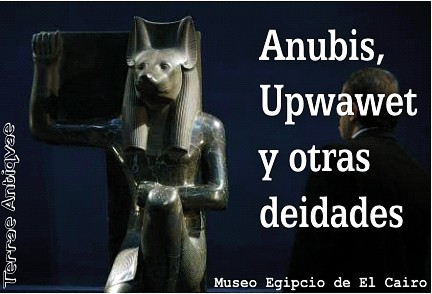
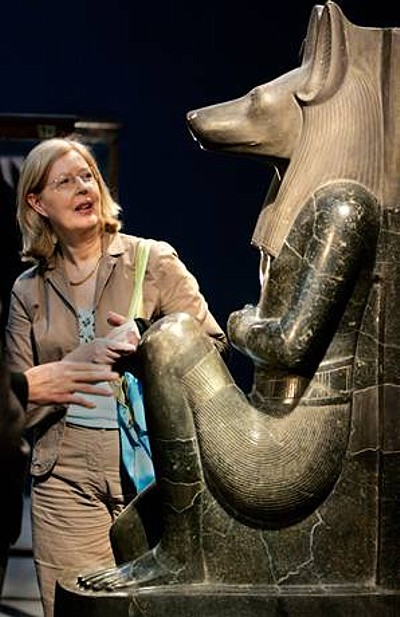
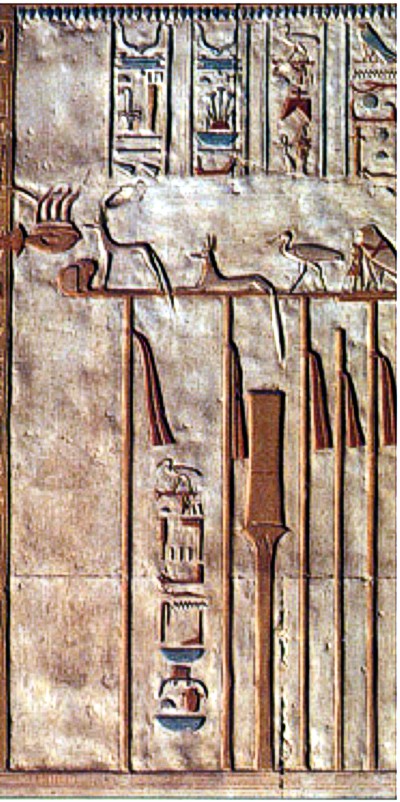
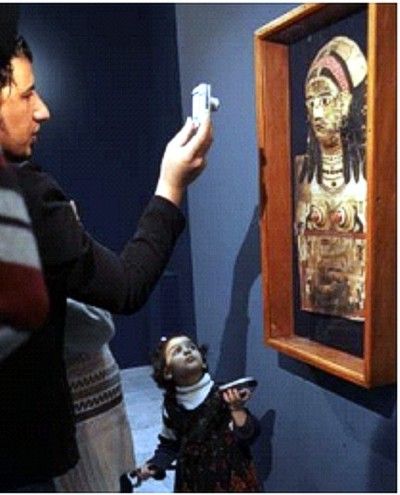
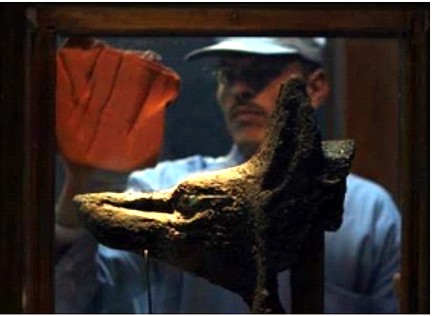
2 comentarios
ESTELA SMITH -
ESTOY SUMAMAENTE DESLUMBRADA POR LA INFORMACION MOSTRADA EN ESTA PAGINA WEB. TRABAJO PARA EL PERIODICO Y BUSCABA NOTICIAS ACERCA DE EL DESCUBRIMIENTO DE EL CALENDARIO OLMECA HACE UNOS DIAS Y LA VERDAD YA LLEVO MAS DE DOS HORAS LEYENDO ESTA PAGINA, ES TAN FASCINANTE Y SI ME PERMITEN QUISIERA PONERLA EN EL PERIODICO PARA QUE LA GENTE QUE NOS LEE ENTRE Y SE LLENE DE INFORMACION IGUAL QUE YO. ME ASOMBRA QUE DESCUBRAN COSAS TAN SEGUIDO, Y NO ES COSA DE HACE UNOS ANOS SINO DE LA HISTORIA DE LA CUAL LEIA EN LOS LIBROS DE HISTORIA. MUCHAS GRACIAS A TODOS LOS QUE HACEN POSIBLE ESTA PAGINA, Y ADELANTE CON EL BUEN TRABAJO DEFINITIVAMENTE ESTAR EN MIS PAGINS FAVORITAS.
Alexandre Rodrigues -
O projecto tem o nome de Archeologica e trata-se de um website em formato wiki, de utilização livre...
Visite e obtenha mais informações aqui: http://ocaco.net/blog/?p=190 ou em http://archeologica.ocaco.net